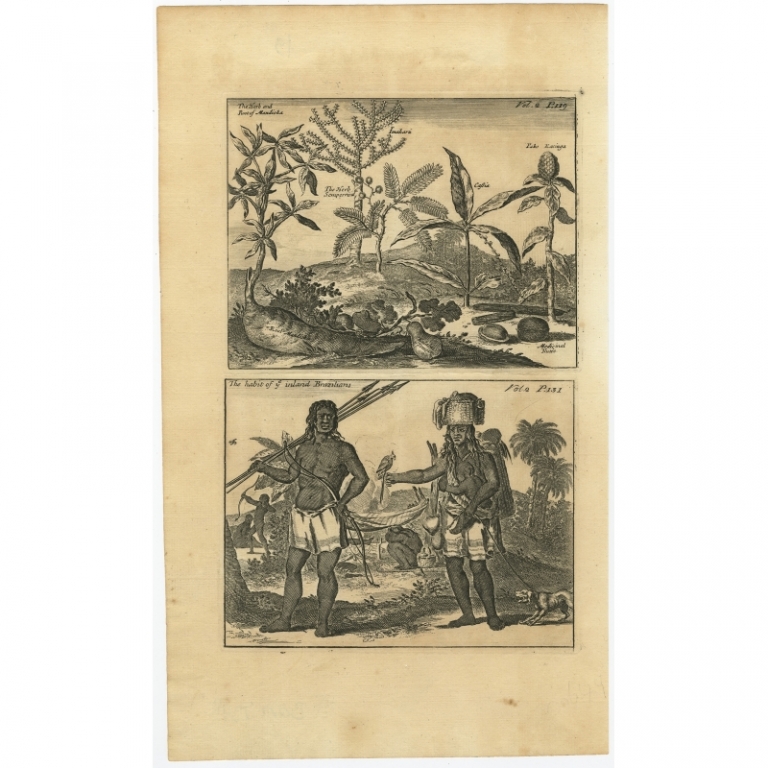FREE
WORLDWIDE
SHIPPING
No products
PCT-61629
Antique Print of Plants and Natives of Brazil by Nieuhof (1744)
- Condition: Good, given age. Paper slightly browned. General age-related toning and/or occasional minor defects from handling. Please study scan carefully.
- Date: 1744
- Overall size: 20.6 x 34.3 cm.
Worldwide
shipping

Description: Antique print, titled: 'The herbs and root of Mandioka - The habit of ye inland Brazilians.' - This plate shows two engravings; natives of Brazil and a selection of crop plants including Mandioka (or Manioc, Tapioca) Medicinal nuts, Imakaru, Cassia etc. Published in Churchill's 'A Collection of Voyages and Travels, some now first printed from original manuscripts others now first printed in English', printed in 1744 for Henry Lintot. First published 1672 in Philip Baldaeus' 'Nauwkeurige beschrijving Malabar en Choromandel, derz. aangrenzend rijken, en het machtige eiland Ceylon.' (transl: Description of the East Indian Countries of Malabar, Coromandel, Ceylon, etc.), printed in Amsterdam by Jacob van Velsen and published by Johannes Janssonius van Waesbergen en Johannes van Someren.
From: Churchill's 'A Collection of Voyages and Travels, some now first printed from original manuscripts others now first printed in English', printed in 1744 for Henry Lintot and John Osborn.
Artists and Engravers: Made by 'Johan Nieuhof' after an anonymous artist. Johan / Jan / Johannes Nieuhof / Nieuhoff / Neuhof (1618-1672) was a Dutch traveler who wrote about his journeys to Brazil, China and India. The most famous of these was a trip of 2,400 km from Canton to Peking in 1655-1657 as part of a Dutch envoy, which enabled him to become an authoritative Western writer on China. Johan Nieuhof was born in Uelsen, Germany, of which his father (originally from Zwolle) was mayor. Nieuhof left for Brazil in 1640 as a reserve officer-candidate - from then on, barring two short family visits in 1658 and 1671, he spent all the rest of his life abroad. After an adventurous career in the service of the Dutch East India Company (or VOC) - between 1660 and 1667 he occupied posts in India and on Ceylon - he then lived in Batavia until 1670. He then disappeared without trace on Madagascar, traveling in a sloop from which he had landed to seek drinking water. The engravings are made after Nieuhoff's drawings.



